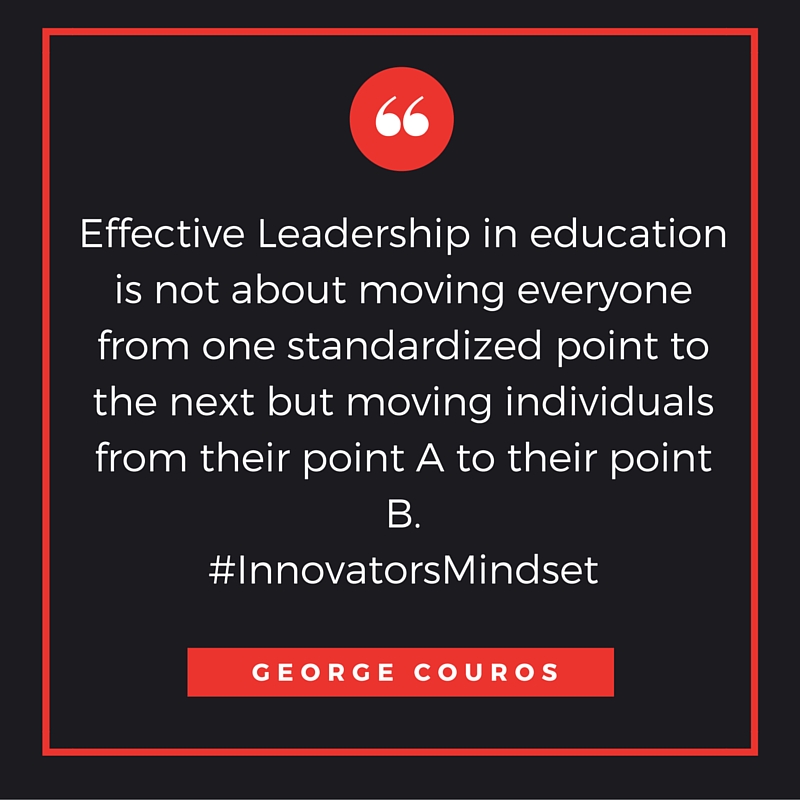While I was working with a leadership team we were discussing the challenges of shifting from teacher led to student-centered learning. The team overwhelmingly agreed that for students to develop the skills and mindsets to be successful in the world we live in today, and in their future, teachers have to abandon over-scaffolded lessons. Too much control and guiding students often takes the thinking out of “problem solving”. On the other extreme, one of the teachers reflected that students don’t just magically “own their learning” just because we schedule time for it in our plan book.
Many educators understand that by structuring the process so much, we often short change the learners but it is difficult to change our practice without clearly understanding what it could or should look like. Designing powerful learning experiences that meet the diverse needs of the individuals in your classroom is rarely a matter of finding the right curriculum or the best “program.” It is much more about knowing your students and having a clear sense of the skills, knowledge and dispositions needed to be developed. This is not something that can be scripted in a textbook and very skilled teachers have different ways of doing this effectively. Too often teachers lack the opportunity to observe others teach and see new ways of teaching, leaving them with only their own experience to rely on.
To deepen our understanding of desired learning environments with this particular team, we walked around campus to observe learning in action. We focused on the level of complexity of student work to move our conversations about learning from theory to practice. In one classroom, we saw students sitting in groups cutting and pasting the steps of a water cycle. As we talked to the students we found out that the teacher had read the process aloud to the students, they watched a video clip on the cycle and then she modeled the right order for students to arrange each of the 6 steps of the cycle on their individual papers.
As we debriefed what we were learning from our observations, one teacher noted that the students could complete the activity by simply following directions but they were not necessarily demonstrating their understanding of the water cycle. Another suggested that if the teacher showed the video and had students read about the process and work collaboratively to figure out the right order, they would likely gain a better understanding of the water cycle. This “small tweak” shifts the lesson from compliance– following the step by step directions to an opportunity to read, think critically, work collaboratively and communicate with peers.
Over and over, observations across campus stimulated similar conversations. As the team debriefed, we focused on the possibilities and what we were learning. There was excitement about the small tweaks that could be made– shifting questions or the sequence of the learning experience seemed possible. Focusing on the small tweaks helped the team understand in concrete terms what type of shifts were necessary in their classrooms to empower learners and make a big impact.

Having a clear understanding of the vision is critical, yet shifting our practice requires small steps to get there. Each tweak teaches us more and allows for a continuous evolution of our practice. Getting from point A to point B is more about a series of small tweaks rather one dramatic shift. Effective teachers are always assessing the students they have in their class creating experiences that meet the needs of the students they serve. They set high expectations and create safe learning environments as they model and guide diverse learners. But to foster mindsets that empower creativity and innovation, they know they must step back and let students grapple with problems so they can truly own their learning.
3 Learner-Centered Movements I am Excited to See Grow in 2024
Almost a quarter of a century into the 21st century, I am excited to see the awareness and,...


As you say, too much scaffolding removes opportunities for students to think independently. They learn to follow a recipe but there’s little transfer to different contexts.
On the other hand, too little structure disadvantages students who are already struggling – they’re the ones who need guidance the most. Eddy & Hogan recently wrote an excellent paper about that – Google scholar “under the hood.”
What’s the middle ground then? Instead of trying to find the perfect balance, I really like the practice of “faded scaffolding” that takes time to transition from too much structure to structure when it’s needed. In faded scaffolding, at first, the teacher does it all, modeling how each step is carried out. Then, the teacher lets the students do one step themselves. It might be the first step in the sequence, or the hardest step (giving students the most practice with that), or the last step (known as backwards faded scaffolding). As students master that step, the teacher lets them do 2 steps, then 3, and so on. By the end of the week/ month/ semester, the students are working and thinking independently, yet the teacher has provided (and continues to provide) structure when necessary.
I’ve got colleagues who do this
– when teaching the scientific method
– when students learn to read journal articles
– students learning to close read and analyse original texts
Peter
@polarisdotca